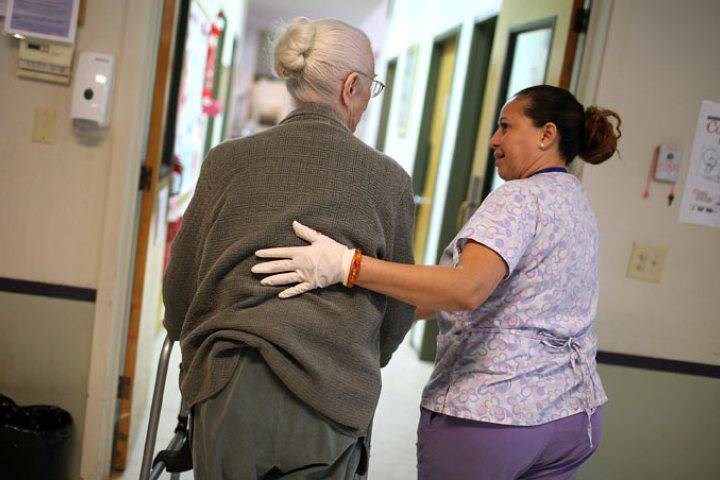With self-isolation protocols in place, residents at area nursing homes are relying on technology to combat the harmful effects of loneliness.
“We are very cognizant of this issue and are working proactively to minimize the effects,” says Leanne Haynes, executive director of the Errinrung Long Term Care Home and Retirement Community in Thornbury. “Errinrung continues to provide small group activities in the home. The group numbers are set low to ensure residents can still participate in activities while maintaining a distance of one to two meters from each other.”
As per the Ministry of Health and Long Term Care directives, Errinrung Long Term Care Home, as well as Grey County’s three long term care facilities - Grey Gables in Markdale, Lee Manor in Owen Sound and Rockwood Terrace in Durham - were restricted to essential visitors only on March 14.
Essential visitors are considered someone visiting a resident who is very ill or dying. In these situations, visitors are screened before entry to the home.
“Generally speaking residents are accepting the restrictions well,” says Jennifer Cornell, director of long term care for Grey County. “They are grateful for the precautions, they feel the restrictions are protecting themselves and their families.”
Haynes echos Cornell’s comments, adding “residents of Errinrung are very understanding of the increased infection control protocols. They know that these measures are in place for their protection and we provide them with regular updates on any change.”
She adds that staff at Errinrung have been trying to bridge the gap left by visitations by working with families to connect online.
“We are actively working with family members to use video calls or Facetime on a regular basis,” Haynes says. “And, in cases where personal devices are not available, we are providing devices to the residents and the family members. This has been thoroughly enjoyed by those who are participating in this program.”
Cornell says the county’s long term care department is also looking to harness modern technology to help bridge the gap, and is working with the county’s IT department to help connect all residents.
“We’re setting up Colour It Connect tablets in all three homes with apps that will let families have face-to-face conversations using apps like Skype,” Cornell says. “Spirits are generally high and many residents are communicating with family regularly via telephone. Residents are excited to have the opportunity to utilize more modern technology to connect with their loved ones.”
While the visitor restrictions will certainly be felt by residents, staff are also adjusting their procedures.
“Staff are managing very well in these early stages and are staying very positive,” Cornell says. “We have strong infection control protocols in place in long-term care to prevent the spread of other viruses like influenza, so in many ways we are operating similar to an outbreak scenario. Unfortunately, this means limiting resident-to-resident interactions, which is disappointing to both our residents and staff.”
Both Errinrung and the county-run facilities are asking the public to hold off on any donations for the time being.
“We live in a wonderful and supportive community here in Thornbury and the support of our community has always been greatly appreciated,” Haynes says. “While donations of goods and services have always been gratefully accepted, with the new restrictions in place we ask that the community withhold these for the time being until the situation in Ontario stabilizes.”
Cornell adds that if the community wishes to send in pictures, stories, or drawings, they are happy to receive those and share them with residents.
“All correspondence we receive will be quarantined for at least 48 hours before it is distributed to ensure no viruses are transmitted,” Cornell adds, but also stresses that the most important thing the community can do is to stay away and stay healthy.
“First and foremost, we encourage visitors to stay away. We know it’s difficult, but that’s the most important thing everyone can do to keep COVID-19 out of our homes,” she says. “Please follow the advice of public health to keep yourselves out of harm’s way and healthy. We all have a role to play in slowing the spread of the virus, and the more effective we are at doing it, the sooner visitor restrictions will be adjusted.”
